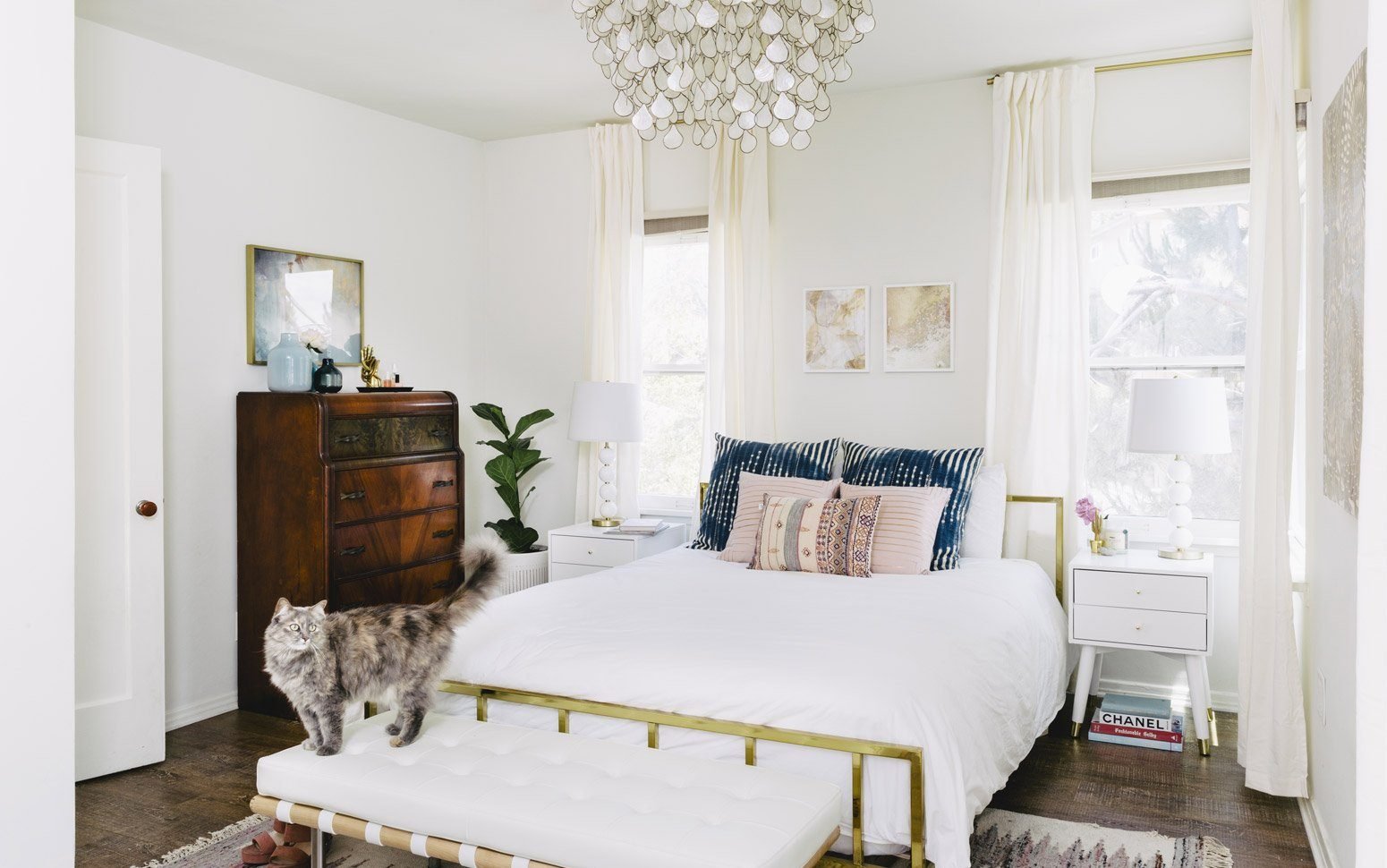Like Lizzo’s signature micro purses, the sweetest “Animal Crossing” details and the world’s tiniest cat, little things can bring us big joy.
So if you’ve got a small bedroom, don’t cry, “Space in this bedroom is too tight.” Think Goldilocks: “This bedroom is just right!” Enjoying your small bedroom is a matter of perspective, and besides, when it comes to creating a cozy sanctuary (one thing we can all use in 2020), you’re ahead of the game.
Looking for inspiration on how to decorate a small bedroom? Pull up a wee chair, pour yourself a glass of wine, and channel Michelangelo, who said, “Art thrives on constraint.” Your small bedroom isn’t a limitation. It’s an invitation to get creative. Here’s how:
What pieces are an absolute must in your small bedroom? A bed, for sure. A nightstand or two, or a shelf within easy reach of the bed. A source of reading light, whether a lamp or a sconce.
Beyond that, everything is negotiable. A chair? Maybe. A wardrobe or dresser? There are other options for clothes storage. A desk and desk chair? Perhaps not in the traditional sense.
Do yourself a favor and keep your must-have list short. Instead, look for pieces that serve dual purposes, such as a nightstand with drawers for small daily wardrobe essentials like underwear, socks and fitness wear.
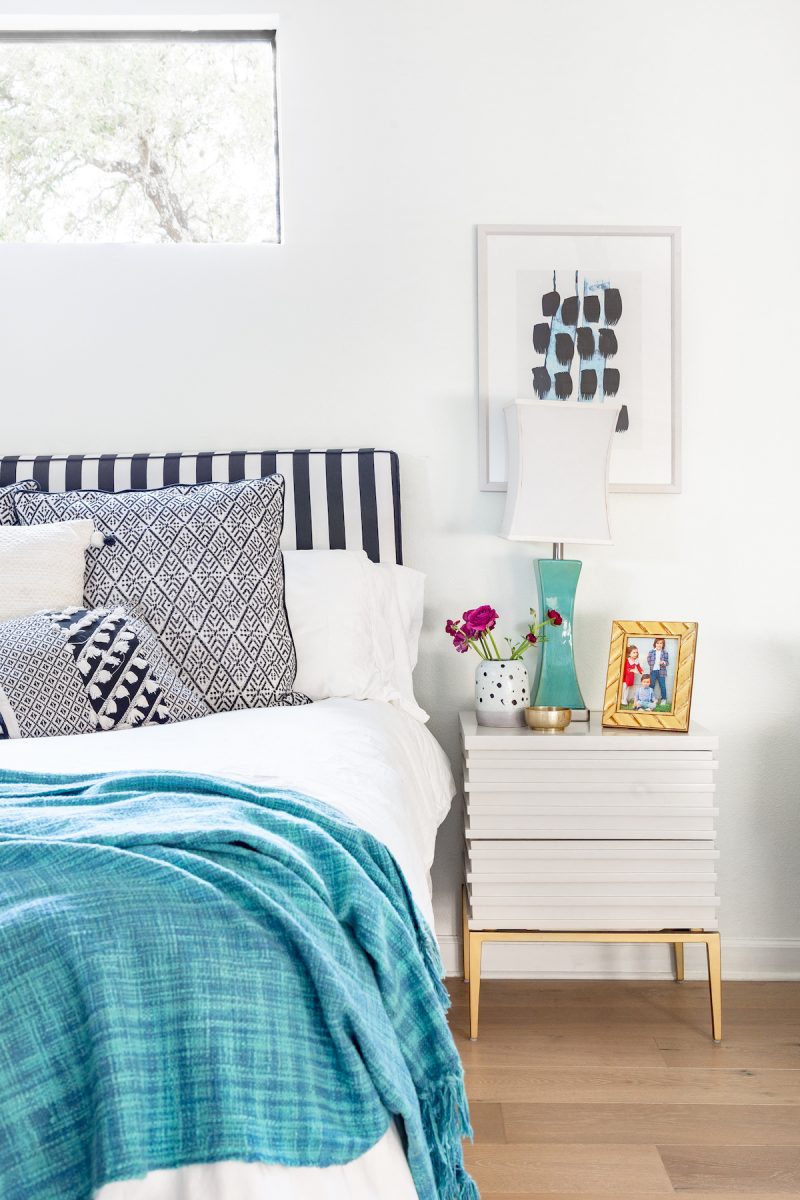
A small bedroom is typically not the space to go big or go home. An oversized bed in walnut or mahogany is going to overwhelm your cozy space. Delicate pieces in pale woods like pine, ash or beech “weigh” less visually.
Another interior design rule of thumb to use when thinking about how to decorate a small bedroom is to create balance and harmony by using forms of similar shapes. Too much variety in form is disjointed.
To create the illusion of space, hang a mirror or three. Place a tall bookcase with a small footprint—or even a slender potted tree—in the corner. Its height will draw the eye up.
If you’re hanging drapes, hang them as close to the ceiling as possible—that, too, will draw the eye up. Try choosing a drapery fabric that matches the color of your walls. It’s another way to enlarge the space visually.
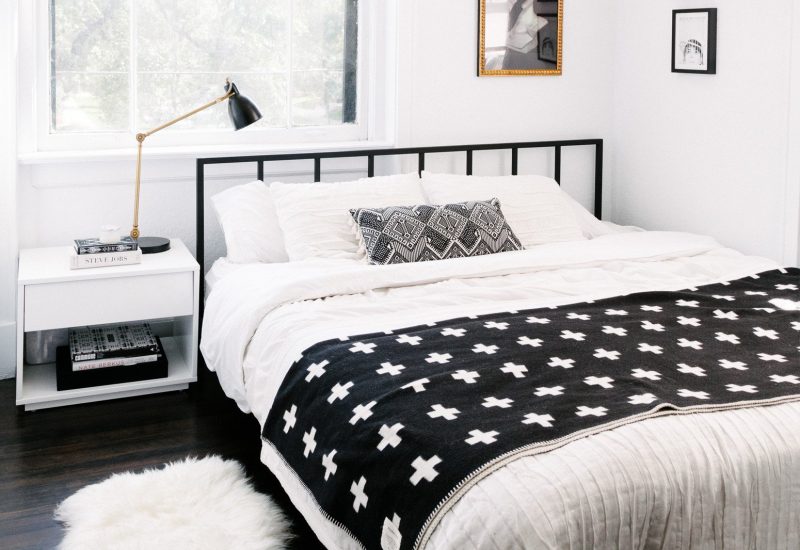
Function and traffic flow are paramount when arranging your furniture in a small bedroom.
You could gain some floor space by pushing one side of your bed against a wall, but that makes it way trickier to put the sheets on the bed and make the bed each day.
In most small bedrooms, there’s really only one location for the bed: with the head of the bed against the shortest wall. From there, arrange your other pieces of furniture, considering the need for clear paths to your bathroom and closet. Just make sure you can open drawers and doors fully.
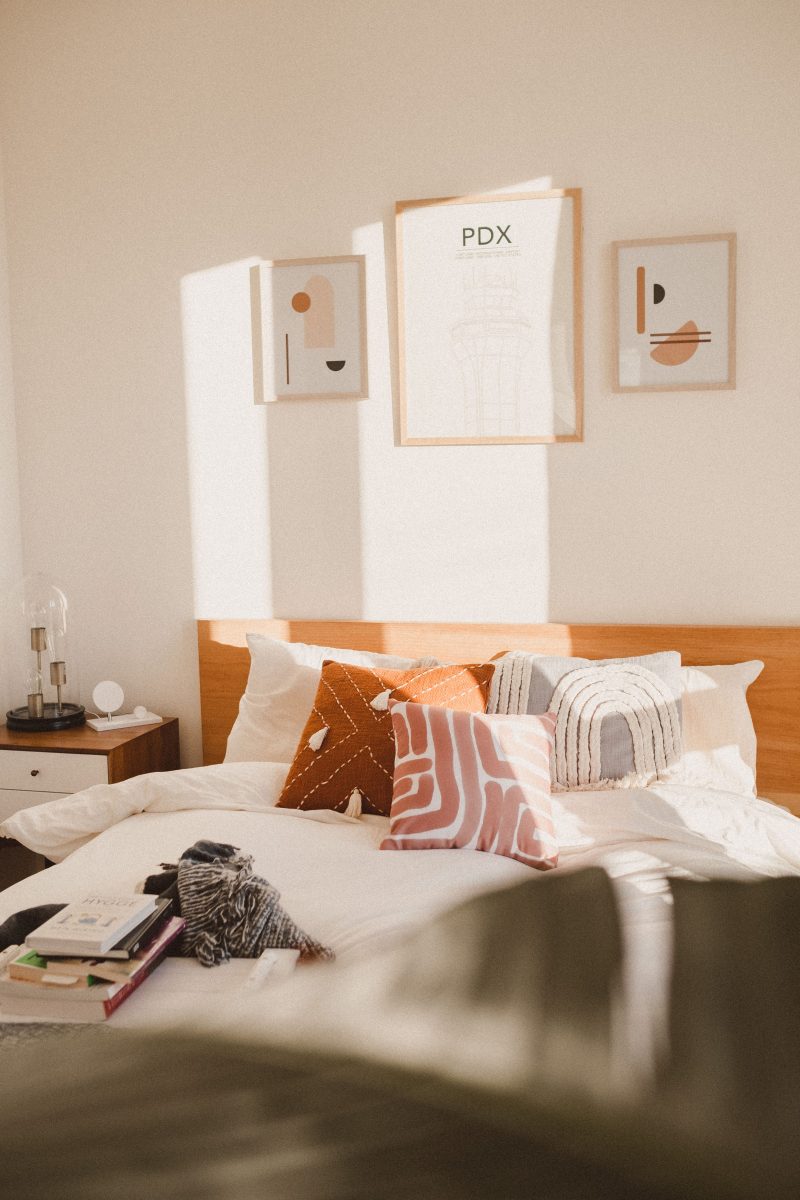
Smart storage is a huge priority in a small bedroom. Luckily, hidden storage opportunities are everywhere.
Stash out-of-season clothing under the bed. Tuck extra bed linens between your mattress and box spring (you’ll never know they’re there). Hang your shoes or your jewelry on the back of your bedroom door.
Put wall hooks and coat racks to work. And if your small bedroom will accommodate a bench, chair or ottoman, make it one with storage inside.

It’s Color Theory 101: Dark colors can add dimension and drama to a room, but light colors can create the illusion of expansion. Pale blues and soft greens are favored for bedrooms because they are so calming, whereas red and orange are appetite stimulants (think of how often you see them in fast-food restaurants).
The whites and off-whites of Scandinavian design are what make it feel so light and airy—a perfect antidote for a bedroom that feels cramped.
Need some paint color inspo? Check out some of our favorite Benjamin Moore shades.

To keep your small bedroom from resembling a cave or a lonely motel room, you’ll want to place a few sources of light throughout the room.
Floor lamps and table lamps take up valuable space, so look to pendant lights or sconces with swinging arms for bedtime reading. A chandelier hung over the bed instantly amps up the glamour (install a dimmer to adjust the mood instantly).
Using soft-white bulbs in all your fixtures, instead of harsh bright white light, will bathe the room in a hygge glow. Warm, inviting and comfortable — a place where bodies and minds can relax.
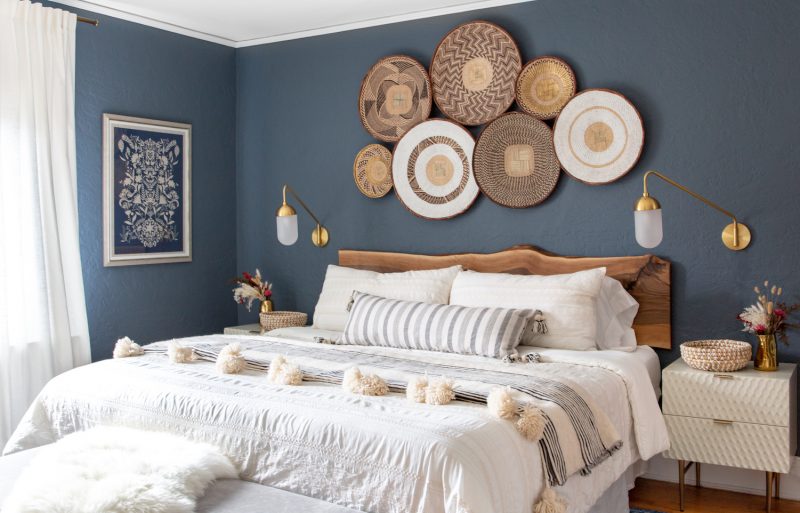
Pattern adds personality to a room. But use a light hand when introducing pattern into a small bedroom. You don’t want to overwhelm your space with a visual cacophony of animal prints, florals and/or polka dots.
Employing patterns with horizontal, vertical or diagonal lines, such as a striped rug, can heighten the sense of space in your small bedroom. And tone-on-tone patterns, like some of these metallic pillows, add a touch of playfulness to your space without being too busy.
How many patterns are too many in a single room? For a room meant to encourage rest, interior designers say play it safe and include a maximum of three patterns in the same color family.
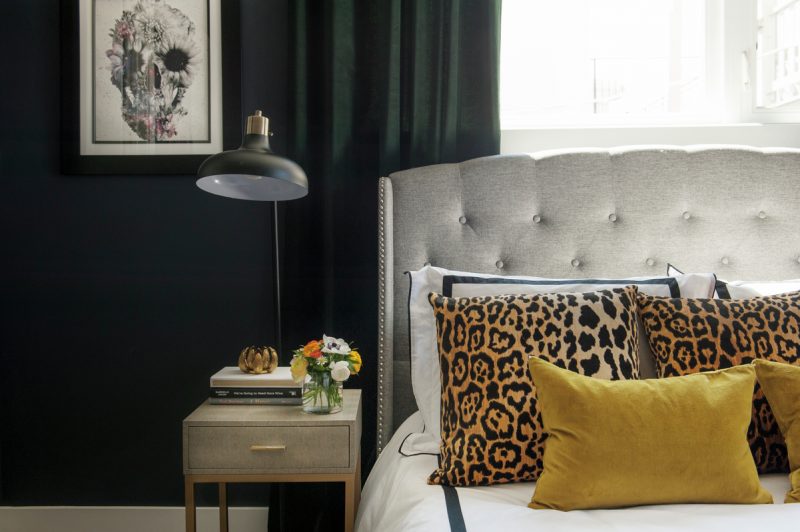
Of all the rooms in your home, the bedroom is where you can have the most fun with texture. Kitchens and bathrooms are always going to be smooth, hard and glossy by design, but in a bedroom you could incorporate items that are furry, fluffy, wooly or velvety (although perhaps not all at once).
In your small bedroom, layering in pillows, duvets, throw blankets and rugs with texture adds to your room a real feeling of warmth and coziness that is experienced both visually and physically. Bonus: These functional items don’t take up any additional space.
Warm and fuzzy textures are another hygge touch that come with the added benefits of lowered stress and better sleep.
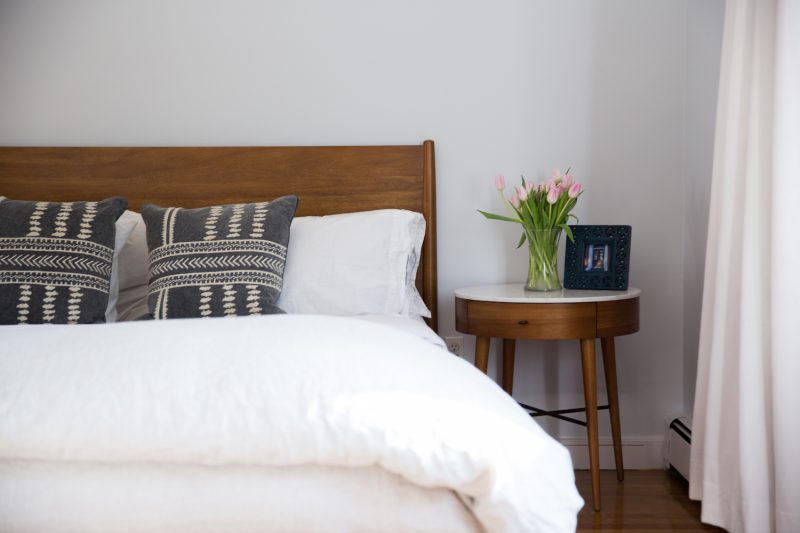
“A place for everything, and everything in its place” is a time-tested motto to live by throughout the home, but triply so in a small space.
Crowding your bedroom with piles of belongings isn’t restful. Neither is letting daily clutter like dirty laundry get the upper hand. (Check out this smart, space-saving bamboo hamper, which tucks neatly into a corner.)
And getting a good night’s sleep is what it’s all about.
Discover the bedroom style that speaks to you with our interior design style quiz.

